Fang Qian
from Novi, MI
- Also known as:
-
- Qian Fang
- Phone and address:
- 49961 Blackberry Trl, Novi, MI 48374
Fang Qian Phones & Addresses
- 49961 Blackberry Trl, Novi, MI 48374
- 49961 Blackberry Trl #111, Novi, MI 48374
- 6515 Yale St, Westland, MI 48185
- 6515 Yale St #2621, Westland, MI 48185
- 6842 Lakeview Blvd, Westland, MI 48185
- Ames, IA
- Moraga, CA
License Records
Fang Qian
License #:
MT040301T - Expired
Category:
Medicine
Type:
Graduate Medical Trainee
Resumes

Fang Qian
view source
Fang Qian
view source
Fang Qian
view sourceLocation:
United States
Us Patents
-
Lattice Microfluidics
view source -
US Patent:20210094036, Apr 1, 2021
-
Filed:Sep 26, 2019
-
Appl. No.:16/584460
-
Inventors:- Livermore CA, US
Sarah BAKER - Dublin CA, US
Eric DUOSS - Danville CA, US
Jennifer Marie KNIPE - Oakland CA, US
Fang QIAN - Santa Cruz CA, US
Samantha RUELAS - Newberry Springs CA, US -
International Classification:B01L 3/00
C12M 3/06 -
Abstract:An engineered unit cell is disclosed for flowing a fluid therethrough in three dimensions. The unit cell may have a substrate with a plurality of flow channels around and between struts formed within the substrate. The struts may each be formed with a desired shape and orientation within the substrate to achieve a desired degree of fluid flow through the flow channels, in each of one of three dimensions, through the unit cell.
-
Systems And Methods For Reaction And Transport Engineering Via Cellular Fluidics
view source -
US Patent:20210077999, Mar 18, 2021
-
Filed:Nov 13, 2020
-
Appl. No.:17/097480
-
Inventors:- Livermore CA, US
Sarah BAKER - Dublin CA, US
James Timothy CAHILL - Livermore CA, US
Jonathan Tesner DAVIS - Oakland CA, US
Joshua R. DEOTTE - Livermore CA, US
Karen Ruth DUBBIN - Hayward CA, US
Eric B. DUOSS - Danville CA, US
Erika Jo FONG - San Ramon CA, US
Hawi Bacha GEMEDA - San Leandro CA, US
Fang QIAN - Santa Cruz CA, US -
International Classification:B01L 3/00
-
Abstract:The present disclosure relates to an engineered, additively manufactured, microfluidic cellular structure formed from a plurality of cells, wherein the cells are each formed from a plurality of interconnected elements. The cells have voids and each cell is open at upper ends thereof. The cells each communicate at a point below its upper end with a common channel. The cells are each configured to accept a fluid and operate to channel the fluid into the common channel and to hold the fluid received therein for later selective withdrawal from the structure.
-
Systems And Methods For Reaction And Transport Engineering Via Cellular Fluidics
view source -
US Patent:20210053056, Feb 25, 2021
-
Filed:Aug 23, 2019
-
Appl. No.:16/549543
-
Inventors:- Livermore CA, US
Sarah BAKER - Dublin CA, US
Victor Alfred BECK - Livermore CA, US
Swetha CHANDRASEKARAN - Dublin CA, US
Joshua R. DEOTTE - Livermore CA, US
Eric B. DUOSS - Danville CA, US
Jeremy Taylor FEASTER - Fremont CA, US
Jennifer Marie KNIPE - Oakland CA, US
Julie MANCINI - Livermore CA, US
James OAKDALE - Castro Valley CA, US
Fang QIAN - Santa Cruz CA, US
Marcus A. WORSLEY - Hayward CA, US -
International Classification:B01L 3/00
-
Abstract:The present disclosure relates to a computer aided design (CAD) manufactured lattice structure. The structure may have a plurality of tessellated cells formed from a plurality of interconnected struts, with the interconnected struts formed from a curable resin. The interconnecting struts form voids within each cell, with the voids communicating with one another. The struts may be formed such that the voids have a non-uniform dimension to create a varying porosity within the lattice structure.
-
Polymeric Encapsulation Of Whole Cells As Bioreactors
view source -
US Patent:20200255818, Aug 13, 2020
-
Filed:Apr 29, 2020
-
Appl. No.:16/862342
-
Inventors:- Livermore CA, US
Sarah Baker - Dublin CA, US
Joshua R. Deotte - Livermore CA, US
Fang Qian - Santa Cruz CA, US -
International Classification:C12N 11/089
C12M 1/00
C12N 11/04 -
Abstract:In one inventive concept, a mixture for forming polymer-encapsulated whole cells includes a pre-polymer, a photoinitiator, and a plurality of whole cells. In another inventive concept, a product includes a structure including a plurality of whole cells encapsulated in a polymer, where the polymer is cross-linked.
-
Method For Electrochemical Roughening Of Thin Film Electrodes
view source -
US Patent:20170350034, Dec 7, 2017
-
Filed:Jun 6, 2017
-
Appl. No.:15/615648
-
Inventors:Anna Nikolaevna Ivanovskaya - Mountain View CA, US
Vanessa Tolosa - Oakland CA, US
Dylan Dahlquist - Folsom CA, US
Satinderpall S. Pannu - Pleasanton CA, US
Kedar G. Shah - San Francisco CA, US
Angela C. Tooker - Dublin CA, US
Fang Qian - Santa Cruz CA, US -
International Classification:C25F 3/14
C25F 7/00 -
Abstract:The present invention relates to surface roughening methods and more particularly to a method for electrochemical roughening of thin film macro- and micro-electrodes. In one embodiment, an electrochemical etch template is formed comprising polymer particles adsorbed on a surface of a substrate to be roughened, followed by electrochemically etching of exposed regions of the substrate between the polymer particles in the electrochemical etch template so as to selectively roughen the surface of the substrate. In another embodiment, a surface of the electrode is immersed in either a adsorbing acidic solution, such as sulfuric acid, or a non-adsorbing acidic solution, such as perchloric acid, followed by electrochemically pulse etching the surface of the substrate at a narrow frequency range for adsorbing acidic solutions, or at a wide frequency range for non-adsorbing acidic solutions.
-
Miniaturized, Automated In-Vitro Tissue Bioreactor
view source -
US Patent:20140322701, Oct 30, 2014
-
Filed:Apr 29, 2014
-
Appl. No.:14/265019
-
Inventors:- Livermore CA, US
Haiyin Chen - San Ramon CA, US
Bryan D. Hudson - Livermore CA, US
Kris Kulp - Livermore CA, US
Margaret W. Mcnerney - Pleasanton CA, US
Satinderpall S. Pannu - Pleasanton CA, US
Fang Qian - Santa Cruz CA, US
Angela C. Tooker - Dublin CA, US
Elizabeth K. Wheeler - Livermore CA, US -
Assignee:Lawrence Livermore National Security, LLC - Livermore CA
-
International Classification:C12M 3/06
C12M 3/00 -
US Classification:435 5, 4352891, 4352872, 4352879, 4353031, 435325, 435 29, 435 61
-
Abstract:In one embodiment, a system includes a bioreactor coupled to a substrate. The bioreactor includes: a plurality of walls defining a reservoir; a plurality of fluidic channels in at least some of the walls; a fluidic inlet in fluidic communication with the reservoir via, the fluidic channels; a fluidic outlet in fluidic communication with the reservoir via the fluidic channels; and one or more sensors coupled to the reservoir, each sensor being configured to detect one or more of: environmental conditions in the reservoir; and physiological conditions of one or more cells optionally present in the reservoir. In another embodiment, a method includes delivering media to a reservoir of a bioreactor; delivering a, plurality of cells to the reservoir, controlling a reservoir temperature and a reservoir gas composition; using one or more of the sensors to monitor environmental and physiological conditions; and reporting the environmental and/or physiological conditions.
Myspace

Xing Fang Qian
view source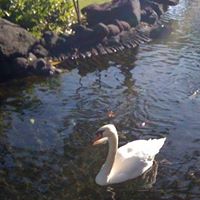
Fang Christine Qian
view source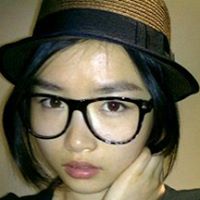
Fang Qian
view source
Fang Yu Qian
view source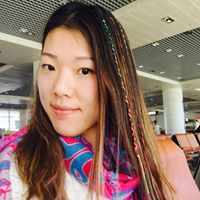
Fang Qian
view source
Fang Qian
view source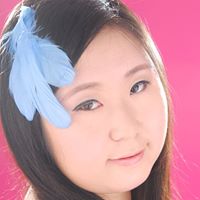
Fang Qian
view source
Fang Qian
view sourceYoutube
Googleplus

Fang Qian
Education:
University of New South Wales
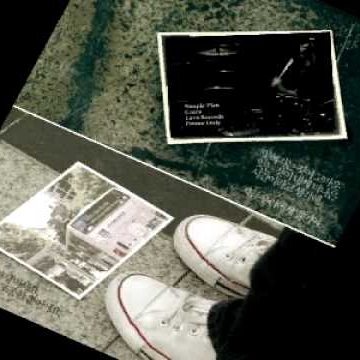
Fang Qian

Fang Qian

Fang Qian
Flickr
Get Report for Fang Qian from Novi, MI













